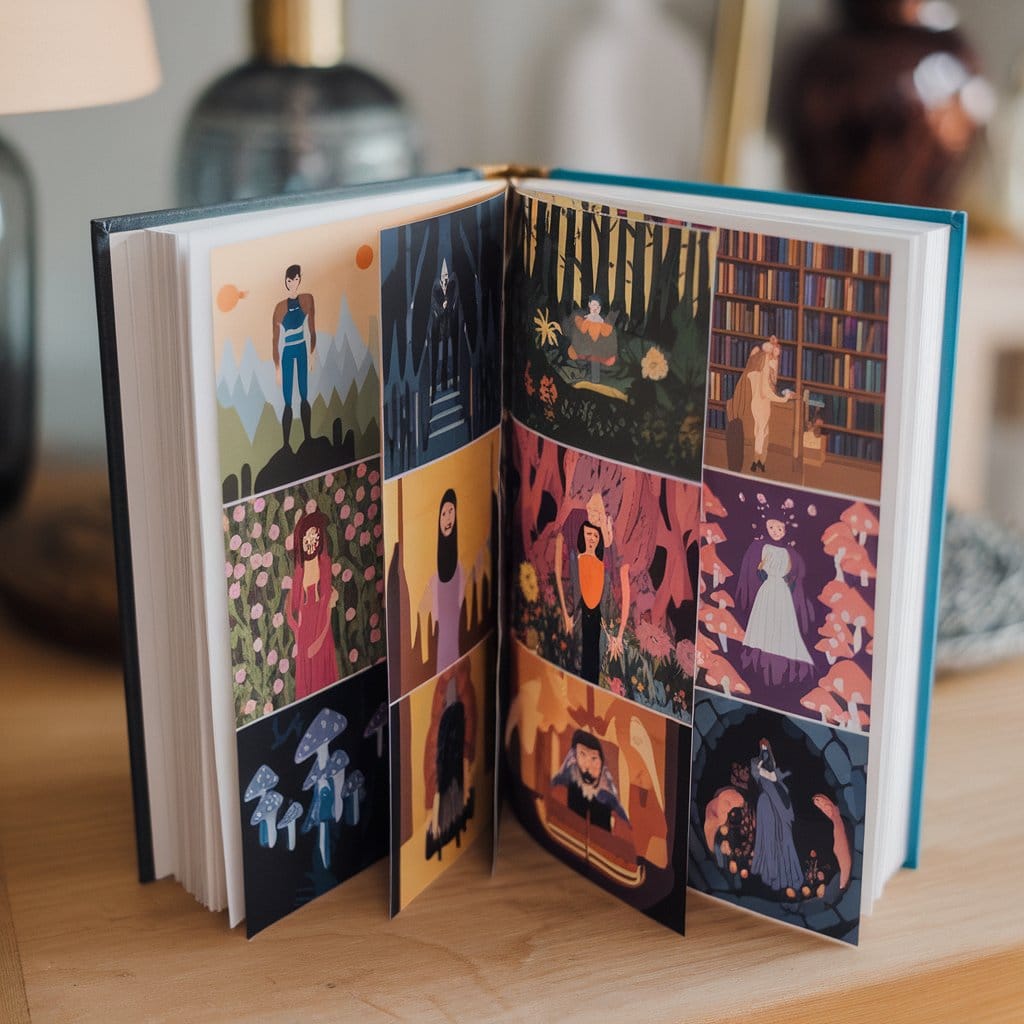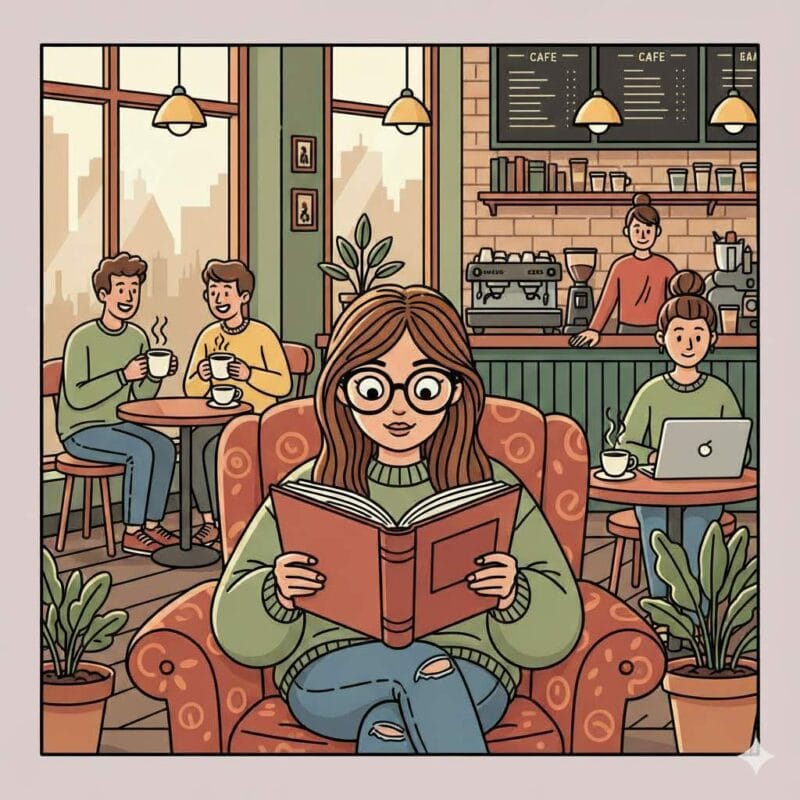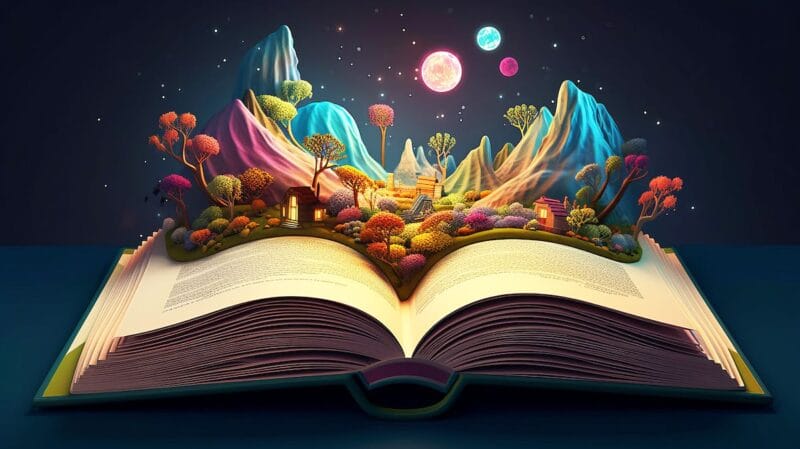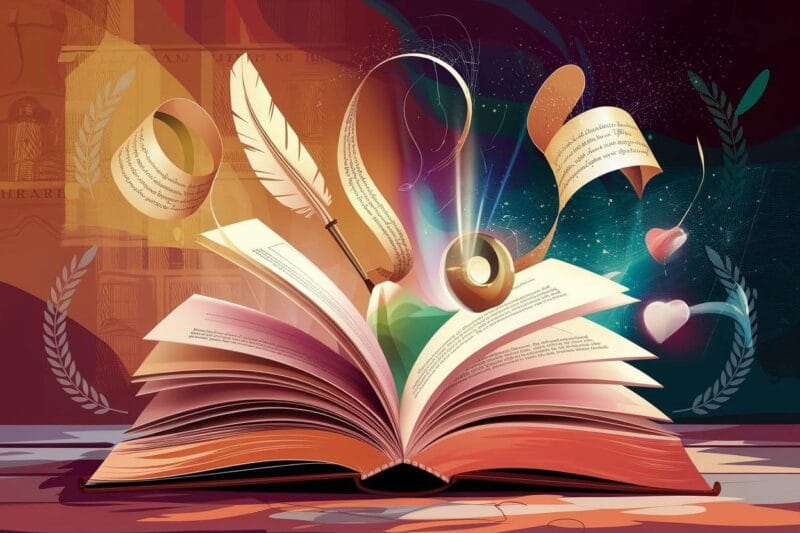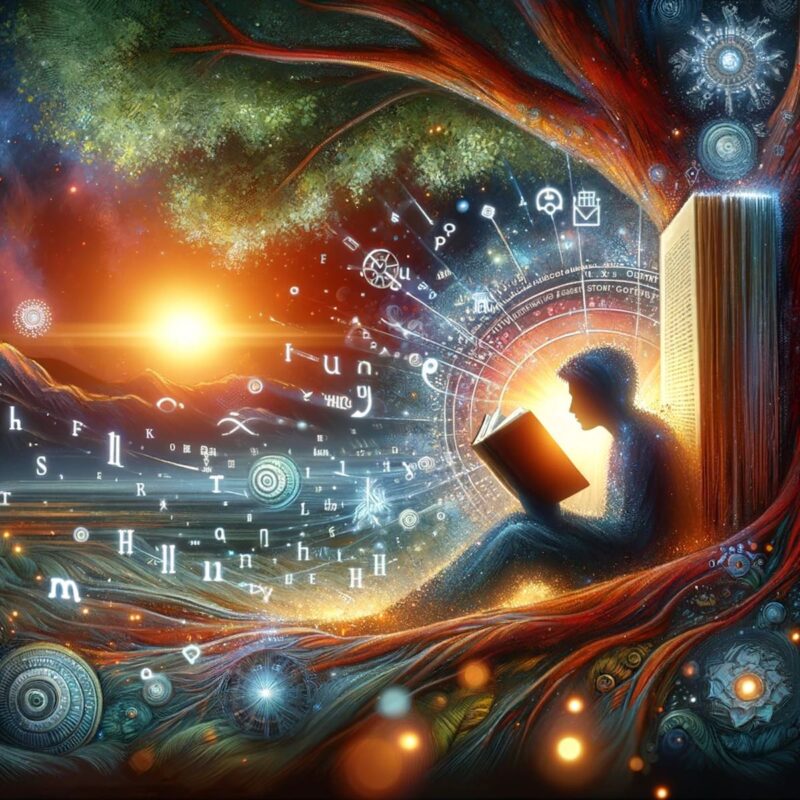- Character archetypes are universally recognized models that recur across literature, embodying specific traits and roles that align with common human experiences. These archetypes offer a structural framework for storytelling, enriching narratives and connecting readers to universal themes.
- Character archetypes adapt across genres, reflecting human complexities while staying rooted in universal patterns. For example, the hero in fantasy fiction, like Frodo Baggins, exemplifies courage and transformation. In romance, the lover, such as Elizabeth Bennet, explores relationships and self-discovery. The anti-hero, like Tom Ripley, subverts traditional heroism, presenting morally complex characters.
- Archetypes differ from stereotypes and stock characters:
– Character Archetypes: Represent core human nature aspects, allowing dynamic character development
– Stereotypes: Simplify characters to superficial traits, lacking depth and authenticity
– Stock Characters: Offer predefined roles that drive the plot without complex development - Character archetypes are pivotal in literature, each bringing unique dimensions to storytelling:
– The Hero: Marked by courage and transformation, often undergoing significant personal growth
– The Mentor: Provides guidance and wisdom, aiding the hero’s journey
– The Sidekick: Offers loyalty and support, enhancing the protagonist’s strengths and weaknesses
– The Villain: Embodies the central conflict, presenting obstacles that drive the plot
– The Innocent: With their purity and optimism, often serves as a moral compass
– The Rebel: Challenges authority and seeks change, pushing against the status quo
– The Ruler: Strives for control and order, often facing the risks of corruption
– The Creator: Driven by innovation and imagination, sometimes at the cost of personal relationships
– The Lover: Seeks deep emotional connections, exploring the transformative power of love
– The Explorer: Fueled by curiosity and the pursuit of the unknown, embodying the quest for discovery and new experiences
Character archetypes are universally recognized models or patterns of characters that recur across various types of literature. These archetypes embody specific traits, behaviors, and roles that align with common human experiences and emotions. They serve as familiar templates that help readers understand and connect with characters on a deeper level.
These archetypes offer a structural framework for storytelling, embodying core emotions and situations that drive character and plot development. They create a sense of cohesion and familiarity in narratives while encouraging readers to explore profound themes of human nature. By connecting individual experiences to universal themes, archetypes enrich the reader’s engagement with literature.
Character Archetypes Across Genres
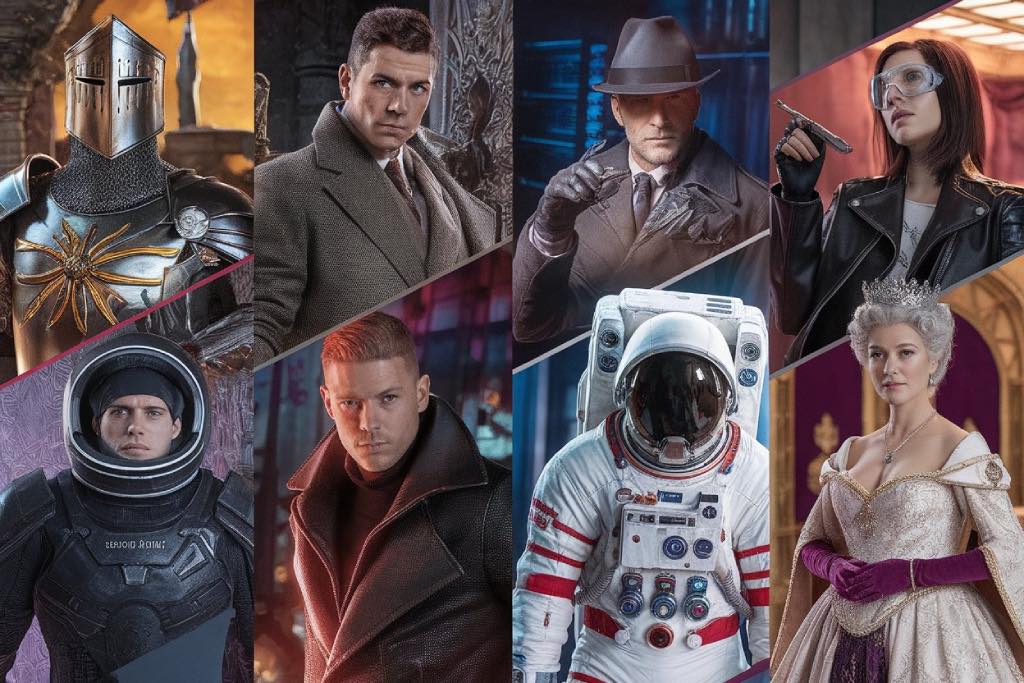
Character archetypes are integral to literature, offering recognizable frameworks that enrich storytelling across genres and styles. Their adaptability allows them to evolve, reflecting the essence of the human condition while remaining rooted in universal patterns.
In fantasy fiction, the hero archetype exemplifies courage and transformation. Using this archetype, narratives often center on overcoming seemingly insurmountable challenges, emphasizing the hero’s growth through struggle, as exemplified by the character Frodo Baggins in The Hobbit (1937), who undertakes perilous journeys that test his resolve and redefine his identity.
In the romance genre, the lover archetype explores the intricacies of relationships and the interplay between desire and self-discovery. Elizabeth Bennet in Pride and Prejudice (1813) exemplifies this archetype, navigating interpersonal dynamics and societal pressures while pursuing authentic connection and fulfillment.
The anti-hero archetype, as seen in Patricia Highsmith’s Tom Ripley from the psychological thriller The Talented Mr. Ripley (1955), subverts traditional notions of heroism by presenting a protagonist driven by self-interest, deceit, and ambition. Ripley’s morally questionable actions challenge readers to confront unsettling questions about ethics, identity, and allure of power, offering a nuanced exploration of flawed humanity.
Archetypes transcend cultural boundaries, adapting to diverse narrative contexts while maintaining their relevance. By grounding stories in shared aspects of human nature, they remain essential to various genres in literature, providing enduring frameworks that connect with readers across time and place.
Character Archetype vs. Stereotype vs. Stock Character
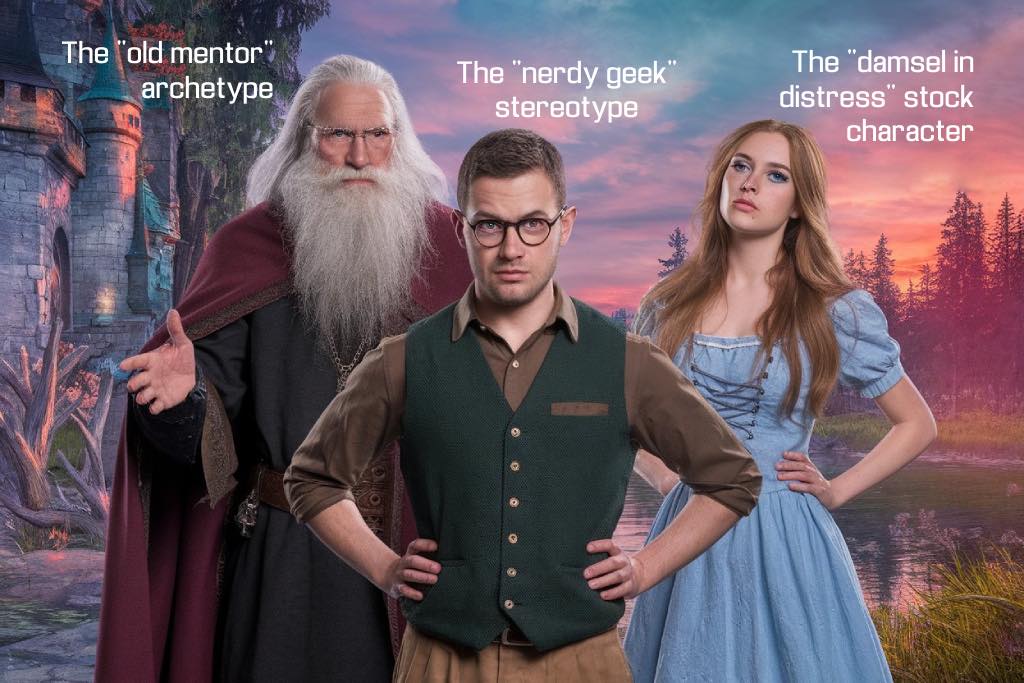
Character archetypes, stereotypes, and stock characters all shape the way narratives unfold and connect with readers. However, while each of them plays a critical role in narrative construction, they operate in distinct ways that influence both the character and narrative arcs.
Below, we explain how they differ, examining how each type operates within a narrative. Understanding these distinctions is essential for recognizing how writers skillfully construct their stories and develop their characters.
Character Archetype
The power of archetypes lies in their ability to represent core aspects of human nature, making them adaptable to a wide range of stories. Archetypes allow for expansive character arcs by providing familiar entry points while enabling dynamic character development. By consistently appearing in varied narratives, they guide readers through a story’s emotional journey, giving shape to characters who navigate internal and external conflicts.
While archetypes can sometimes seem predictable, their broad appeal stems from their ability to evoke a sense of recognition and resonance. Their timelessness ensures they remain an effective tool for writers, providing the means to delve into complex themes and create character-driven plots that resonate with universal truths. In doing so, archetypes remain a vital part of storytelling, capable of enriching both the narrative and the reader’s connection to it.
Stereotype
Stereotypes, meanwhile, simplify characters to a few superficial traits, stripping away the complexity that gives them depth and authenticity. These oversimplified representations often rely on fixed, narrow qualities, such as the “dumb blonde” and the “evil henchman,” that lack the nuanced characteristics needed to create multifaceted individuals. By reducing characters to one-dimensional roles, stereotypes diminish their emotional impact and restrict their potential to engage with readers in a meaningful way.
While stereotypes may make immediate impressions or serve as shorthand for conveying information, they often do so at the expense of depth and nuance. Characters portrayed in this way tend to lack the internal conflict and development that would allow them to evolve over the course of a story. This rigidity leaves little room for the characters to surprise, grow, or challenge the assumptions that define them.
Moreover, when writers rely on stereotypes, they risk perpetuating shallow, unexamined assumptions that do little to advance the narrative or foster a deeper connection with readers. Those who seek more intricate, authentic portrayals may find themselves disconnected from stories that lean too heavily on these simplistic characters. In the long run, stereotypes hinder storytelling by limiting the scope of character exploration and reinforcing familiar but underdeveloped characters.
Stock Character
Stock characters occupy a middle ground, functioning as familiar fixtures in storytelling, offering consistent, predefined roles that help drive the plot without requiring complex development. These characters, though often predictable, fulfill specific functions within a narrative, ensuring that key elements of the story are effectively communicated and progressing in a coherent manner.
These characters are typically seen across genres and settings, embodying well-worn tropes that readers immediately recognize. Examples include the “damsel in distress,” the “femme fatale,” or the “mad scientist”—types that readers have come to expect in certain contexts. Their presence provides stability and clarity within the narrative, allowing the focus to remain on more dynamic or central figures.
While stock characters don’t often undergo significant change or personal growth, they are essential for maintaining the structure of the story. They help reinforce the main characters’ journeys and the overarching plot, often serving as catalysts for action or as supporting figures who balance the narrative’s tone. By fulfilling these functional roles, stock characters contribute to the overall flow of the story, ensuring it remains engaging and efficient without overshadowing the more complex characters or themes.
In skilled hands, archetypes provide a foundation for creating well-developed, relatable characters with unique personalities and motivations. While archetypes can become stereotypes or stock characters if handled poorly, they themselves are not inherently negative. The overlap happens because stock characters often derive from archetypes but are more narrowly defined and sometimes lack depth. Interestingly, some stereotypes, such as the “dumb blonde,” subvert its assumptions, turning the character into someone with hidden depth (e.g., Elle Woods of Amanda Brown’s 2001 novel Legally Blonde).
List of Character Archetypes
1. The Hero
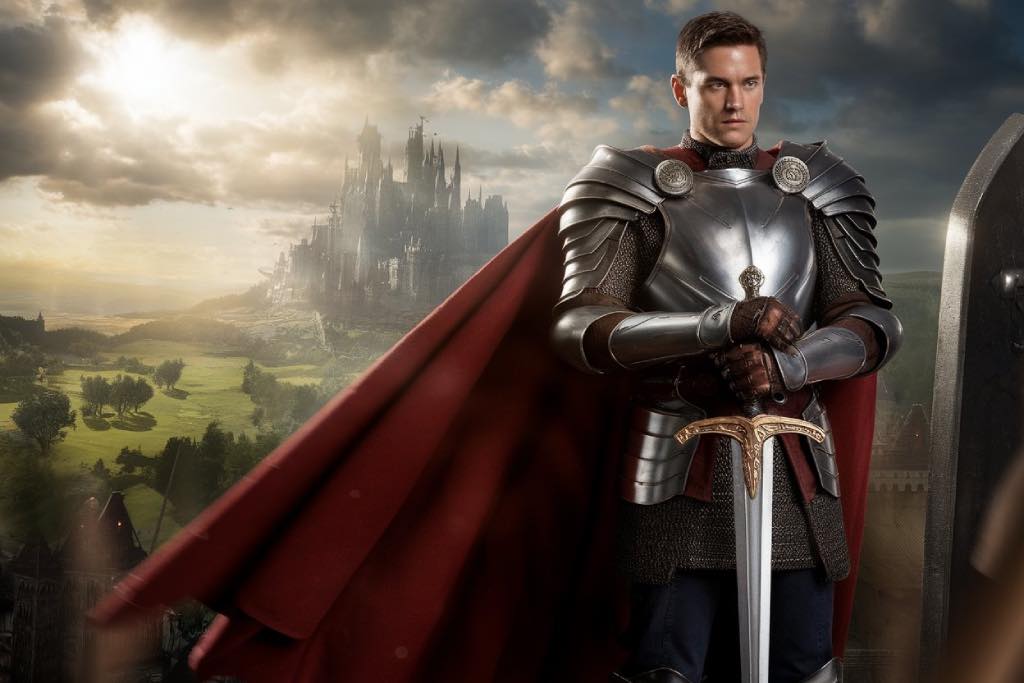
The hero archetype is a cornerstone of literature, representing courage, determination, and the relentless pursuit of justice. Often emerging from humble beginnings, these characters exemplify inner strength as they navigate trials and overcome challenges. Their journeys highlight the capacity for change and the enduring human spirit to persevere in the face of adversity.
Heroes often possess extraordinary abilities or qualities that set them apart from those around them. These talents, whether innate or discovered, form the foundation of their quest and shape their adventures. Characters such as Harry Potter, whose magical abilities emerge in response to a hidden legacy, or Jon Snow, whose reluctant leadership in A Game of Thrones (1996) drives him to confront existential threats, demonstrate how unique gifts become instruments of change.
However, the hero’s journey is rarely one of straightforward triumph. Heroes must contend with significant trials that test not only their physical strength but also their moral convictions. These struggles often push the hero to confront their flaws, revealing their true character in the process. What sets these figures apart is their unwavering commitment, leading them to make profound sacrifices for the greater good. The toll of this journey, while heavy, often proves the hero’s resolve, which underscores their dedication to justice.
The hero’s journey is a narrative framework found in myths, epics, and modern stories. It centers on universal themes of struggle, perseverance, and the battle between good and evil. These stories endure because they explore what it means to face challenges, make sacrifices, and fight for something greater than oneself. The hero’s journey resonates because it reflects essential aspects of life, offering insights into the pursuit of purpose and personal fulfillment.
2. The Mentor
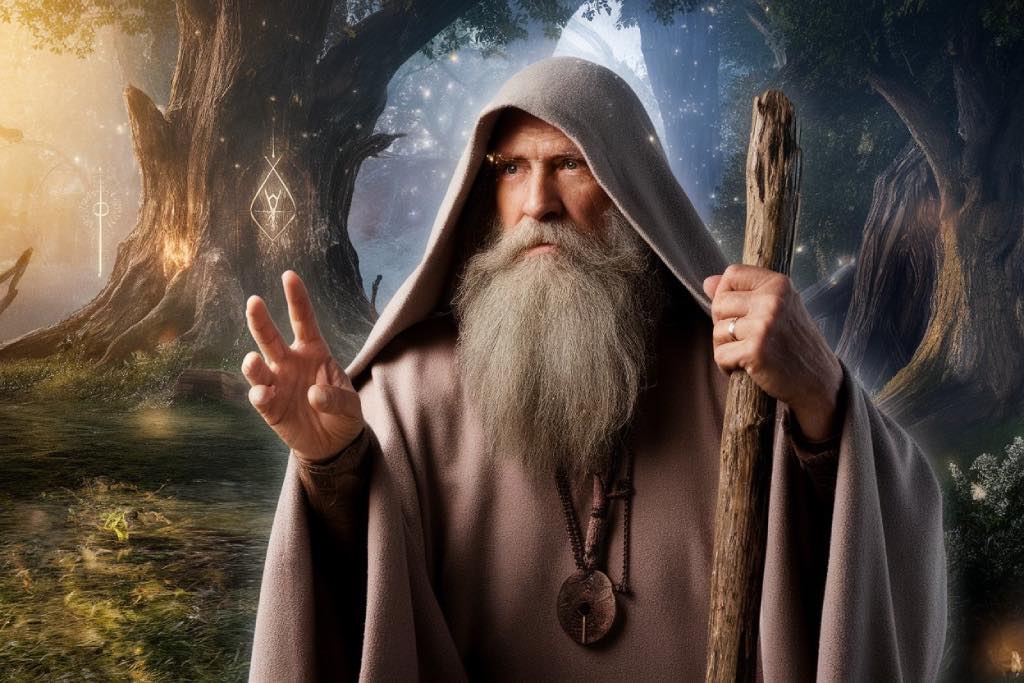
The mentor archetype plays a pivotal role in literary storytelling, serving as a guide who helps the protagonist navigate their journey. Typically, the mentor is portrayed as possessing experience, wisdom, and skills that surpass the hero’s, often offering the critical knowledge needed to overcome obstacles.
While mentors are often depicted as older figures, their role extends beyond merely imparting technical skills. They provide emotional and moral guidance, offering support and reassurance when the protagonist faces doubts or challenges. This support is essential, as it enables the hero to grow, develop, and confront adversity with clarity and confidence.
The mentor’s backstory often mirrors the protagonist’s, offering insights from past experiences that help navigate challenges. A prime example is Gandalf in The Lord of the Rings. His own struggles with dark forces provide the wisdom to guide Frodo, helping him understand the stakes and make crucial decisions in the journey to destroy the One Ring. Gandalf’s guidance draws from his past, ensuring Frodo is prepared for the challenges ahead.
Thematically, the mentor represents the transmission of knowledge, wisdom, and values. They are guardians of important traditions or teachings, ensuring that lessons learned over time are passed on to the next generation. In guiding the protagonist, the mentor plays a crucial role in shaping their transformation, helping them fulfill their destiny or achieve their goals. Through this dynamic, the mentor highlights the vital role of experience and mentorship in human development and the pursuit of purpose.
3. The Sidekick
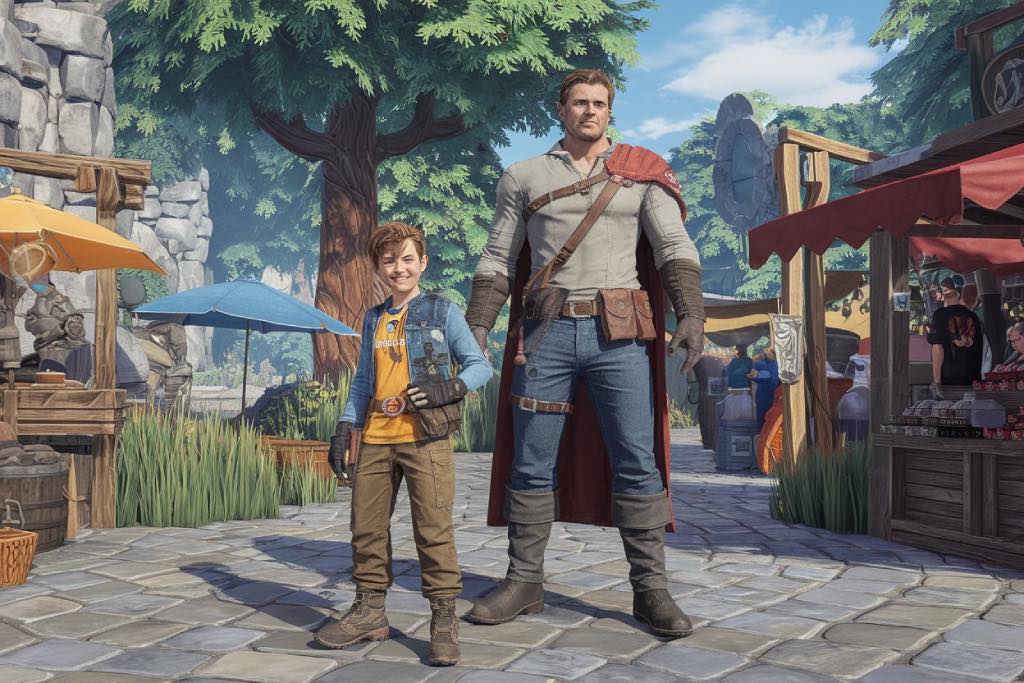
The sidekick archetype is integral to the protagonist’s journey, often acting as a steadfast and supportive companion. While typically loyal and dependable, sidekicks bring much more to the narrative than simple companionship. They help highlight the protagonist’s strengths and weaknesses, providing emotional support and sometimes offering a fresh perspective. This dynamic partnership enhances both characters, deepening the overall narrative.
Sidekicks often serve as sounding boards, offering alternative perspectives or emotional stability. Their contributions can guide the protagonist through crucial decisions, and at times, they provide comic relief that lightens the tone of the story. In Sir Arthur Conan Doyle’s Sherlock Holmes canon, Dr. Watson plays a key role not just as Holmes’s chronicler but as a moral anchor, balancing the detective’s brilliance with a grounded sense of practicality, which helps make the extraordinary mysteries more relatable.
Interestingly, sidekicks can also align with antagonists, amplifying the protagonist’s flaws or accentuating the antagonist’s darker traits. This dual role enhances the sidekick’s impact on the story, enabling them to steer the plot in unexpected directions. The range of sidekick archetypes—whether comedic, tragic, or morally ambiguous—showcases their adaptability and enduring importance in character-driven stories.
4. The Villain
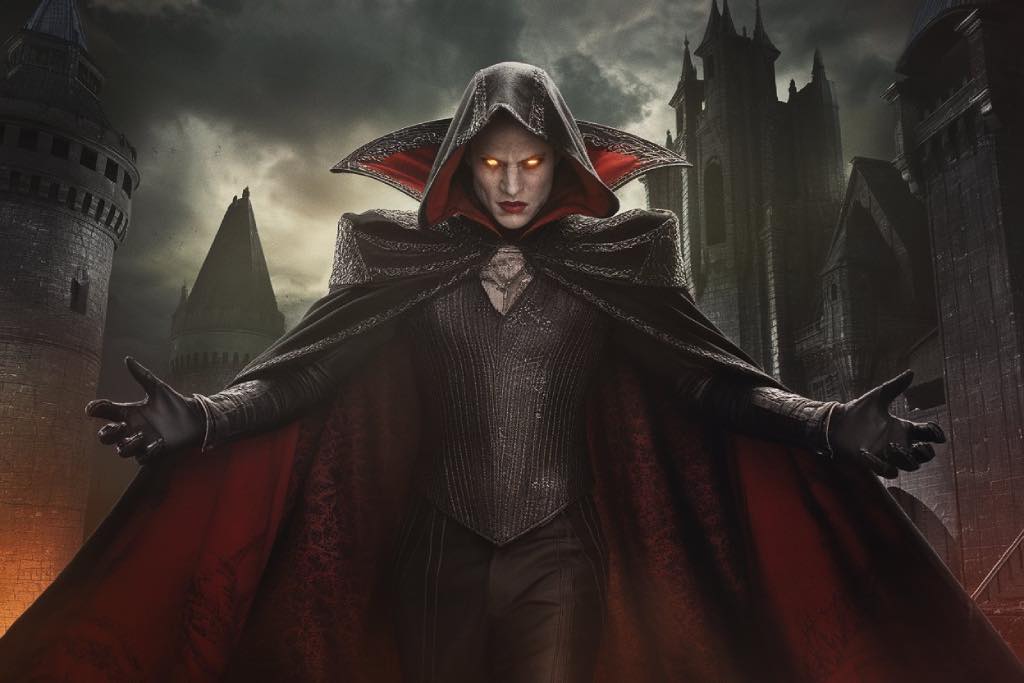
The villain archetype occupies a pivotal role in literature, serving as the primary force opposing the protagonist and often embodying the central conflict within the narrative. These characters exhibit a range of forms and motivations, reflecting diverse approaches to antagonism.
The traditional villain is often depicted as an unambiguous embodiment of malice, designed to starkly contrast the hero’s virtues. Norman Bates of the horror novel Psycho (1959), for instance, exemplifies a character whose actions reveal an unrelenting capacity for harm, highlighting the darker aspects of human nature.
Other villains, such as the trickster, operate through subtlety and manipulation rather than overt violence. These figures use cunning and psychological insight to mislead and destabilize, forcing protagonists into moral and strategic missteps. Their unpredictability lies in their ability to exploit vulnerabilities, creating challenges that test the hero’s resolve.
The manipulative villain archetype goes beyond this, employing deceit as a tool to manipulate conflict. Iago from Shakespeare’s Othello exemplifies this archetype, using his persuasive skills to fracture relationships and provoke chaos for personal gain. Such villains thrive on their capacity to control outcomes from the shadows, often driven by jealousy, ambition, or vengeance.
5. The Innocent
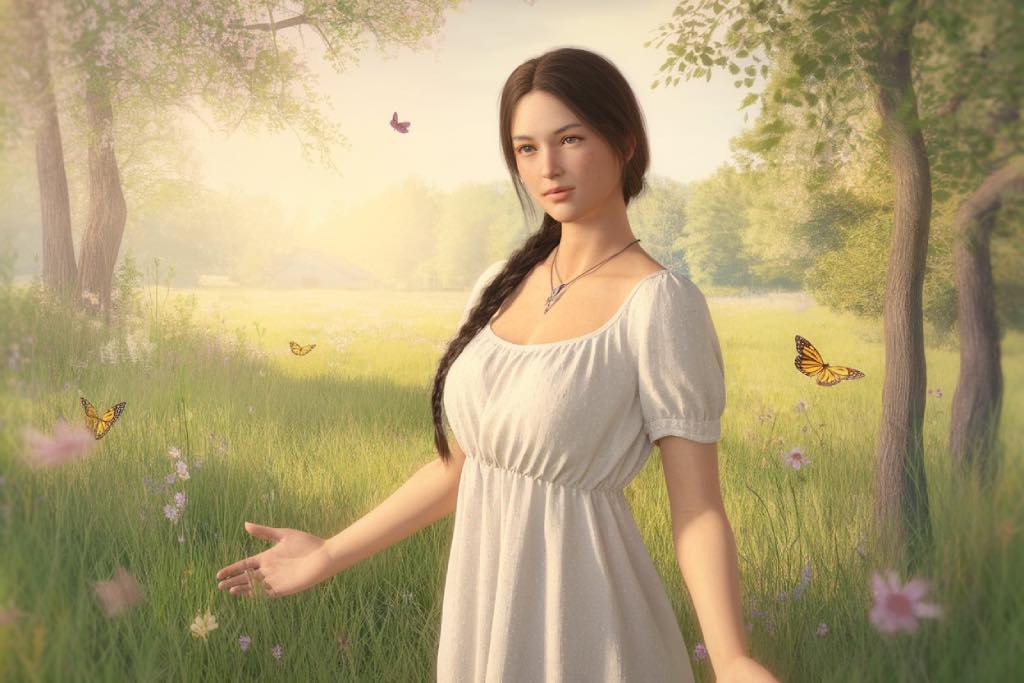
The innocent archetype embodies purity, optimism, and an unwavering belief in the goodness of others. These characters bring a unique lens to storytelling, often serving as a touchstone for themes that interrogate the complexities of morality, human relationships, and the loss of naivety. Their idealistic worldview enables them to approach situations with curiosity and hope, even in the face of adversity, offering a stark contrast to more cynical or pragmatic characters.
Scout Finch from To Kill a Mockingbird (1960) exemplifies this archetype, her perspective shaped by an eagerness to understand her community and the social structures around her. Scout’s innocence serves as both her strength and her limitation, as her unfiltered observations challenge the hypocrisy and prejudice ingrained in her environment. Her experiences illustrate how the innocent archetype can explore profound moral questions without losing its core qualities of wonder and sincerity.
Innocent characters are often defined by their inexperience with life’s harsh realities, which can lead to moments of naivety. However, their reactions to challenges frequently illuminate broader truths about the world they inhabit. Their presence in a narrative often serves as a counterpoint to more seasoned or disillusioned characters, highlighting tensions between idealism and reality. This dynamic not only enriches character interactions but also underscores the stakes of the story, as the innocent archetype often acts as a moral compass or catalyst for transformation in others.
The innocent archetype transcends genre, appearing in works ranging from coming-of-age stories to darker narratives. For example, Pip in Charles Dickens’s Great Expectations (1861) begins his journey with untainted dreams of social advancement, only to grapple with the disillusionments of adulthood. Whether they remain untouched by corruption or face inevitable change, the innocent archetype provokes reflection on what is lost and gained through experience.
6. The Rebel

The rebel archetype represents a defiance of established structures and a drive for personal or societal change. Rebels challenge authority, disrupt the status quo, and resist control, embodying a profound rejection of limitations—whether imposed by external systems or internalized beliefs. Their resistance often stems from a moral conviction, a desire to right wrongs or free themselves and others from oppression, and their presence in stories serves as a catalyst for transformation.
Rebels are defined not just by their opposition to authority but also by their sense of autonomy and willingness to confront power. These characters tend to expose the flaws in dominant ideologies, often positioning themselves as dissenters. Through their actions, they force characters and readers alike to critically examine established values and assumptions. The rebel’s challenge to the status quo often introduces conflict that shifts the direction of the story.
A prime example of this archetype is Robin Hood, whose resistance to the oppressive rule of the Sheriff of Nottingham questions authority through acts of theft and redistribution, driven by a sense of justice for the poor. Similarly, Katniss Everdeen in The Hunger Games (2008) exemplifies the archetype through her rebellion against a totalitarian regime that exploits and controls the districts. In both cases, these characters are not just rebels for the sake of rebellion; their resistance is tied to a larger moral purpose.
7. The Ruler
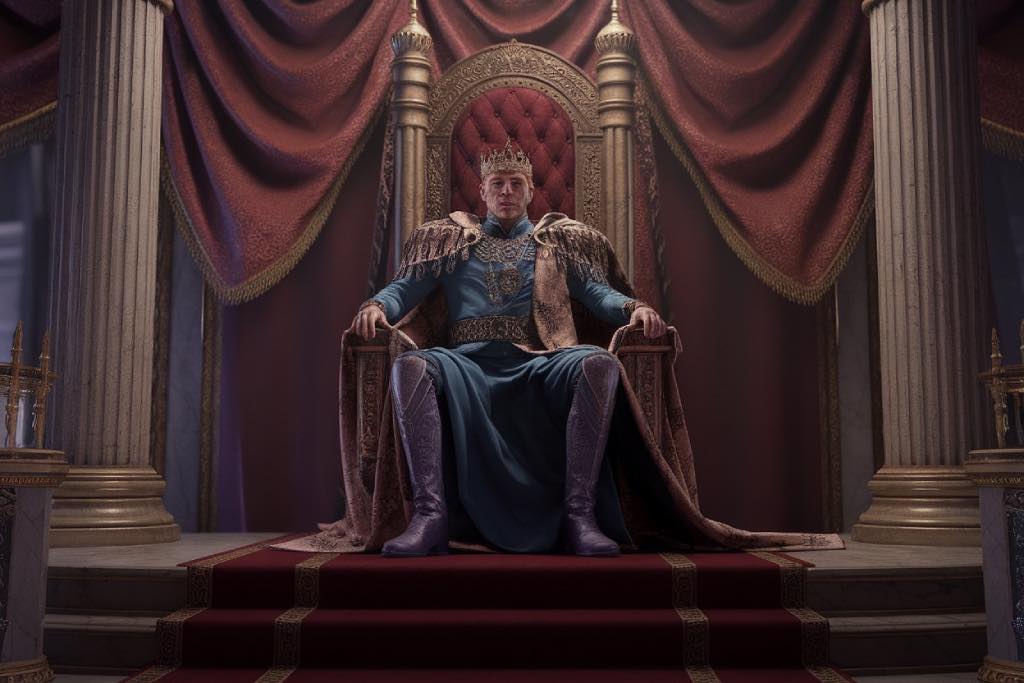
The ruler archetype represents figures of power and authority, often central to the political, social, or economic order of their worlds. These characters seek to impose structure, using control and influence as tools to shape their environment according to their own vision of stability or progress. However, the nature of their rule is rarely uncomplicated; their leadership is frequently marked by internal conflicts and external challenges, making them a dynamic force within stories.
Rulers in literature are often portrayed as determined to consolidate and expand their authority. Their motivations may stem from a desire to maintain peace, protect their domain, or elevate their own status and legacy. In many cases, their ambitions extend beyond simple governance, aiming to reshape society to align with their personal ideals.
However, the ruler archetype frequently presents an inherent vulnerability: the potential for corruption. Power, when concentrated in the hands of a single individual, can distort intentions and lead to authoritarian or oppressive rule. As rulers grow more obsessed with control, their decisions become less moral and their systems can become tyrannical. This dynamic is evident in characters like George Orwell’s Napoleon from Animal Farm (1945), who manipulates power for personal gain, or in Shakespeare’s Macbeth, where the protagonist’s ruthless desire for sovereignty leads him to betray his own values.
8. The Creator

The creator archetype represents individuals driven by a deep desire to bring ideas to life. These characters are often characterized by their imagination and relentless pursuit of innovation, constantly striving to break from conventions and create something entirely new. Their motivation stems from a need to create, whether through art, technology, or intellectual pursuits, and their journeys are often marked by a singular focus on their craft.
However, the creator archetype is not without flaws. Their passion often leads to imbalanced relationships as they become absorbed in their work and neglect the needs of others. This intense focus can breed isolation and frustration, fueled by perfectionism or the disappointment of their creations falling short of their vision. These internal conflicts create narrative tension, underscoring the sacrifices creators make in pursuit of their goals.
The creator archetype is also notable for its potential to alter the course of narratives. Whether as central protagonists like Victor Frankenstein in Frankenstein (1818), whose ambition to transcend natural limits leads to tragedy, or as secondary characters who spark change through their innovation, such as the inventor in The Time Machine (1895) by H.G. Wells, creators are rarely passive. Their inventions, creations, or ideas catalyze transformation, forcing others to confront new possibilities and navigate the consequences of creative passion.
In many instances, creators embody a paradox: their works can be both liberating and destructive. This duality makes them compelling figures, offering opportunities to explore broader themes of progress, ethics, and the cost of invention. Ultimately, the creator archetype, in its various forms, shapes the narratives in which it appears, infusing them with the drive to shape the future while navigating the personal and societal challenges that arise from such ambition.
9. The Lover
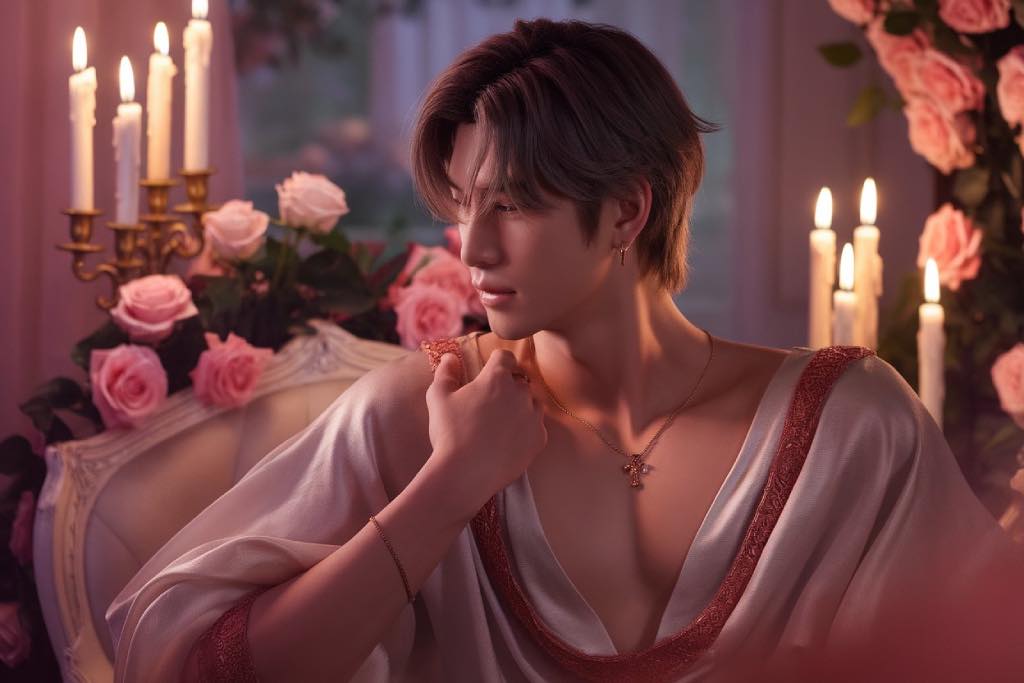
The lover archetype is one of the most enduring and versatile figures in literature, embodying characters whose primary motivations are deeply rooted in emotional bonds. These characters seek connection, whether through romantic love, familial ties, or devotion to ideals. Their stories often explore the transformative power of love and the complexities that arise when it clashes with the challenges of reality.
While the lover is most frequently associated with romance, this archetype transcends that singular genre. The lover’s love can manifest in various forms: the unconditional affection of a parent, the camaraderie between close friends, or the passionate pursuit of a social or political cause. In each case, the lover is driven by the desire for unity—whether it’s uniting with another person or with a collective ideal. This yearning for connection often motivates their actions, pushing them to act selflessly, sometimes at great personal cost.
In William Goldman’s The Princess Bride (1973), for example, the relationship between Buttercup and Westley perfectly illustrates the core traits of the lover archetype. Their love is marked by unwavering devotion and sacrifice, but it also reveals love’s darker sides—jealousy and the complexities that emerge when two people are forced to navigate external forces. The journey of these two characters challenges the very notion of love, testing how far one is willing to go to protect and uphold it.
10. The Explorer

The explorer archetype is defined by an insatiable curiosity and a constant search for the unknown. Driven by a need to break free from the mundane, explorers thrive on new experiences and uncharted territories, both literal and metaphorical. They are characterized by their willingness to challenge the status quo, embracing uncertainty and discomfort in the pursuit of discovery.
Explorers are often depicted as independent figures, valuing autonomy above all else. This desire for freedom shapes their choices, leading them down unconventional paths that are not always easy or predictable. Their stories frequently revolve around self-reliance, with characters resisting any limitations that might confine their sense of adventure. Whether navigating unfamiliar lands or venturing into the depths of their own psyche, their journeys are fueled by a drive to experience life in its fullest form.
In literature, the explorer archetype often contrasts with the ruler archetype, which emphasizes authority, control, and stability. While explorers seek freedom and new experiences, rulers focus on maintaining order. In The Lord of the Rings, Aragorn embodies both archetypes—balancing the pursuit of personal autonomy with the responsibility of leadership. His role contrasts with Frodo’s, who embodies the explorer’s drive to challenge boundaries. This dynamic creates tension between the desire for exploration and the need to preserve stability.
Beyond their physical quests, explorers’ journeys symbolize the drive to challenge limits, uncover new possibilities, and expand one’s understanding of the world. In this way, the explorer archetype plays a pivotal role in narrative development, pushing characters—and readers—toward new frontiers, both in the external world and within themselves.
The Dynamic Nature of Archetypes
Archetypes in literature have the remarkable ability to adapt over time. As society and cultural values shift, the portrayal of archetypes evolves to reflect new realities and reader expectations. Characters like Katniss Everdeen exemplify this change by flipping traditional roles and presenting a strong female protagonist who is both reluctant and powerful, challenging what readers might typically expect.
Modern storytelling often requires striking a balance between familiar archetypal roles and innovative storylines. While the hero, villain, or mentor archetypes remain recognizable, their nuances may be tailored to fit contemporary readership preferences. This ensures that while readers appreciate the comforts of well-established patterns, they also encounter fresh perspectives that enhance their connection to the story.
Utilizing archetypes effectively means both respecting their traditional qualities and reimagining them. Authors may blend archetypal traits or introduce unexpected qualities to characters, making them feel both timeless and fresh. This approach allows for characters that remain rooted in familiar patterns while offering new perspectives.
Adaptive archetyping can also involve subverting conventions, where heroes show vulnerability or villains present understandable motives. This shift encourages readers to engage with stories that are more nuanced and less predictable. By embracing this flexibility, stories stay engaging and relevant as character archetypes continue to evolve.
